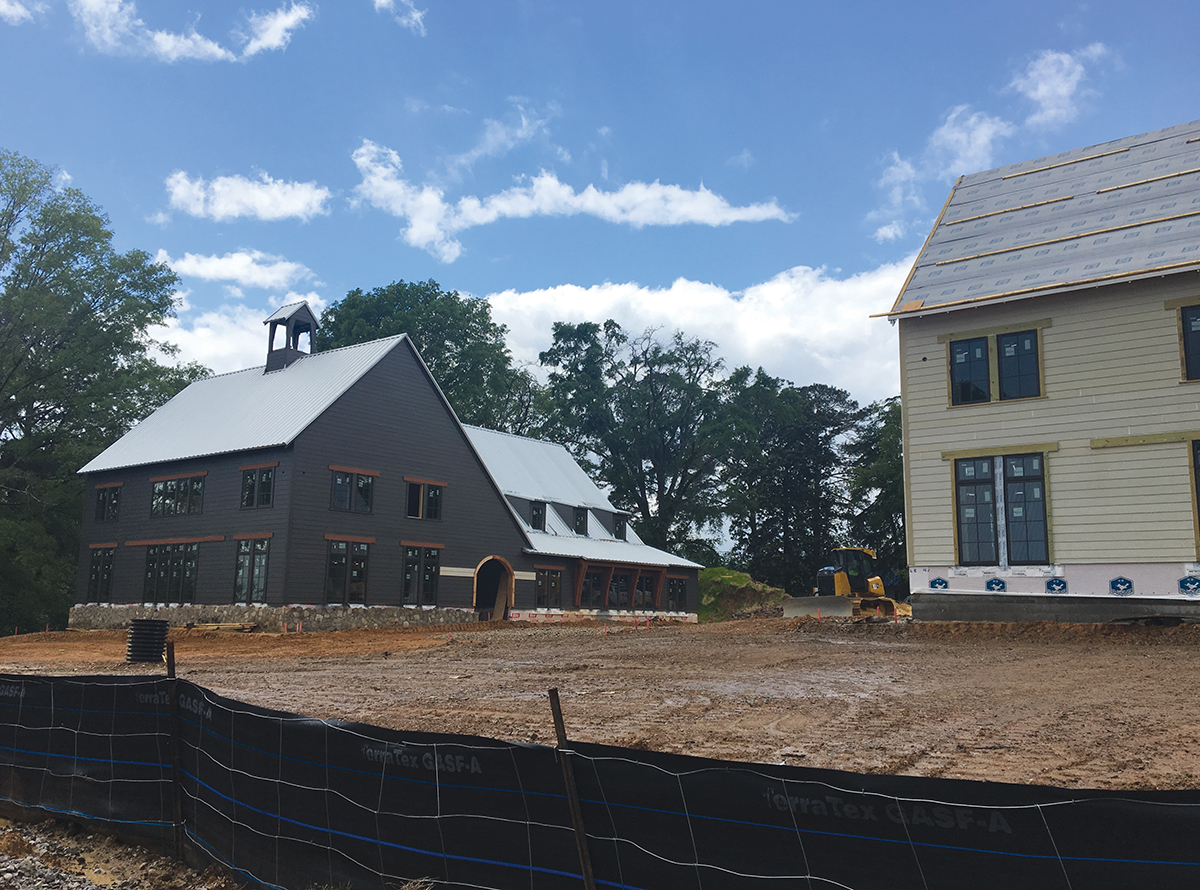
 Trends in corporate real estate are determined by a wide range of factors. Operationally, regardless of business type, size or location key considerations have fallen into three areas: access to skilled labor, escalation of building costs and general economic uncertainty.
Trends in corporate real estate are determined by a wide range of factors. Operationally, regardless of business type, size or location key considerations have fallen into three areas: access to skilled labor, escalation of building costs and general economic uncertainty.
A better perspective of these factors and their impact on corporate real estate can be had by a deeper dive in to each factor.
• Access to Skilled Labor — Beginning in the latter part of the 20th century, three major demographic trends — slowing growth, aging and increasing diversity — led to changes that have had a considerable impact on the profile of the labor force in the United States.
Similar trends are projected to affect the 2018-20 workforce. The high growth rate of the labor force from the 1970s to the 1990s has been replaced by a much slower growth since 2000. The slow growth rate of the labor force is expected to continue through 2020.
The aging of the Baby-Boom generation is expected to make up a much larger share of the labor force. In 2008, the Baby-Boom cohort was 44 to 62 years of age; 2018 will see almost all the Baby Boomers in the 55-years-and-older age group depart the workforce, thus dramatically lowering the overall labor force participation rate and the growth of the labor force. Workforce shrinkage, combined with demographic shifts have introduced a workforce that is more generationally, culturally and ethnically diverse than ever before.
As a result, corporate real estate managers must plan for the unique needs and preferences of a workforce that includes a rising generation that hasn’t spent years waiting for the corner office. Rather, the new worker strives to connect, integrate and find community among peers in a world that is increasingly online. Their ideal environment breaks down the walls previous generations spent years putting up.
Labor supply shortages have not only impacted firms with existing offices and plants, but also those requiring the development and construction of new corporate facilities.
During the recession, construction employment was disproportionately affected. As a result, many construction professionals — both labor and management — left the industry. Across the country, there are 1.4 million fewer people employed in construction than there were at the peak in 2007, according to the U.S. Bureau of Labor Statistics. Many in the construction industry who lost their jobs during the recession have found new careers, and many skilled tradesmen left the industry altogether.
 Compounding the shortage is the lack of high-quality training available to young people entering the construction workforce today. Construction has not been recommended as a career option, neither during the recession nor in these recovery years. While the movement in secondary education is trending toward creating more technical training, the pace at which young people are entering the construction workforce is not keeping pace with demand. Add to that the immediate need for seasoned construction professionals and labor and it’s not difficult to imagine how this personnel shortage could contribute to a slowdown in commercial development.
Compounding the shortage is the lack of high-quality training available to young people entering the construction workforce today. Construction has not been recommended as a career option, neither during the recession nor in these recovery years. While the movement in secondary education is trending toward creating more technical training, the pace at which young people are entering the construction workforce is not keeping pace with demand. Add to that the immediate need for seasoned construction professionals and labor and it’s not difficult to imagine how this personnel shortage could contribute to a slowdown in commercial development.
• Escalation of Development Costs — The Turner Building Cost Index is indicating that the currently high level of construction activity is driving an increase in construction costs. (Note: Turner has provided construction forecasts to governmental agencies for more than 80 years.) The Third Quarter 2017 Turner Building Cost Index, which measures costs in the non-residential building construction market in the United States, has increased to a value of 1044. This reflects a 1.26 percent increase from the Second Quarter 2017 and a 4.92 percent yearly increase from the Third Quarter 2016.
For 2018 construction, indicators predict slightly stronger growth of five percent overall. Residential construction should again be six percent, sustained by nine percent growth in single-family construction. Non-residential construction should have strong Institutional growth with education and public buildings growing six percent. Commercial construction is expected to grow two percent with office construction leading at six percent. Overall, non-residential development is predicted to grow four percent. Non-building is also forecasted for four percent growth based on an uptick of six percent in roads and bridges.
Geographically in 2018, the South and the West will likely be the key regions of growth with Texas, Nevada and New Mexico leading that growth. On top of that, 36 of the top 50 MSAs will experience expansion in 2018. The three largest MSAs, in terms of construction starts spend, are forecasted as follows: New York City (minus two percent), Dallas (10 percent) and Houston (14 percent).
 Overall construction costs are forecasted for ongoing increase in 2018 in the two-three percent range, led by three-four percent higher construction labor costs.
Overall construction costs are forecasted for ongoing increase in 2018 in the two-three percent range, led by three-four percent higher construction labor costs.
• Economic Outlook — Based on several key economic indicators, the U.S. economic outlook is healthy. Of those key indicators, the most critical indicator is the gross domestic product, which measures the nation’s production output. The current GDP growth rate is expected to remain between the two percent-three percent ideal range. Unemployment is forecast to continue at the natural rate. There isn’t too much inflation or deflation.
Direction emerging from the Federal Reserve indicates that U.S. GDP growth will rise to 2.5 percent in 2018. That is roughly the same as in 2017, but better than the 2.1 percent growth in 2016. The GDP growth rate is projected to be 2.1 percent in 2019 and 2.0 percent in 2020.
The unemployment rate is anticipated to drop to 3.9 percent in 2018 and 2019 but rise to 4.0 percent in 2020. That’s better than the 4.1 percent rate in 2017 and the 4.7 percent rate in 2016. It’s also better than the Fed’s 6.7 percent target.
Within the workforce, there has been a sharp rise in the number of part-time workers and that most job growth is in low-paying retail and food service industries.
Structural unemployment has also significantly increased. This component of the workforce has been out of work for so long that they’ll never be able to return to the high-paying jobs they used to have. Removing these workers from the “workforce” makes the unemployment rate seem low.
U.S. manufacturing is forecast to increase faster than the general economy. Production will grow 2.8 percent in 2018. Growth will slow to 2.6 percent in 2019 and two percent in 2020.
Interest Rates
The Federal Open Market Committee raised the current fed funds rate to 1.5 percent in December 2017. Future projected increase would include an increase in this interest rate to 2.1 percent in 2018, 2.7 percent in 2019 and 2.9 percent in 2020.
The federal funds rate controls short-term interest rates. These include banks’ prime rate, the Libor, most adjustable-rate and interest-only loans and credit card rates.
The Fed began reducing its $4 trillion in Treasury’s in October. It initially said it would do so only after the federal funds rate has normalized to 2.0 percent. But the FOMC decided it would be better to normalize its balance sheet now. The Fed acquired these securities during quantitative easing, which ended in 2014. Since the Fed is no longer replacing the securities it owns, it will create more supply in the Treasury’s market.
These actions should result in a rise in the yield on the 10-year Treasury note. That drives up long-term interest rates, such as fixed-rate mortgages and corporate bonds, thus making corporate expansion more expensive.
But Treasury yields also depend on demand for the dollar. If demand is high, yields will drop. As the global economy improves, investors have been demanding less of this ultra-safe investment. As a result, long-term and fixed interest rates will rise in 2017 and beyond.
The last time the Fed raised rates was in 2005. It helped cause the subprime mortgage crisis. While rumors and predictions of a real estate market crash in the next two years persist, there are significant differences between the 2017 market and the 2007 market that makes this unlikely.
Impacts of the Tax Cuts and Jobs Act on Corporate Real Estate
On December 20, 2017, Congress passed a tax reform act (formerly known as the Tax Cuts and Jobs Act or the “Act”). The Act includes several major changes to many areas of the Internal Revenue Code (the Code) impacting taxpayers who are engaged in the real estate business and who otherwise own real estate. These changes have the potential for significant impact on corporate real estate acquisition and the expansion of corporate real estate holdings.
Several of the key provisions are summarized below:
• Corporate Tax Rates Lowered — The Act permanently reduces the corporate tax rate to a flat 21 percent beginning in 2018. When combined with the maximum 20 percent tax rate on qualified dividends paid by a C corporation to an individual shareholder, the effective tax rate on income of a C corporation distributed to its shareholders will be 36.8 percent (or 39.8 percent after the 3.8 percent Medicare tax on dividends).
• REITs Retain Most of Benefits Relative to C Corporations — The Act provides for a 20 percent deduction for REIT dividends, beginning in 2018. That deduction (when combined with the reduction in individual income tax rates) will result in an effective maximum marginal tax rate of 29.6 percent on REIT dividends received by individual investors (plus unearned income Medicare tax.
• Contributions to Capital of Corporations by a Governmental Entity or Civic Group No Longer Tax-Free — The Act amends Section 118 of the Code, which generally provides that a corporation is not taxed on property contributed to it, so that it will now not apply to contributions by any governmental entity or civic group (other than any such contributions made by a shareholder as such). Thus, for example a contribution of land by a city to a developer or corporation would be taxed to the corporation at the land’s fair market value. The explanation to the bill further provides that “[t]he conferees intend that section 118, as modified, continue to apply only to corporations.” This may be read to imply that a partnership (or any other type of entity other than a corporation) also would be taxed on such a contribution, as well as any contribution that might otherwise qualify for non-recognition treatment under section 118 if made to a corporation.
• Section 1031 Tax-Free Exchange Treatment Retained for Real Property Exchanges — The Act modifies the IRC Section 1031 exchange provisions by limiting their application to real property that is not held primarily for sale. Thus, properly structured real property exchanges will continue to enjoy tax deferred treatment under IRC Section 1031. However, the portion of any exchange that includes personal property will no longer qualify for tax deferred treatment under IRC Section 1031.
2018 Corporate Real Estate Outlook Wrap-up
Corporate and commercial leasing fundamentals are expected to continue on a positive trend, benefiting from an expanding economy. Tax reform has generated favorable policies toward commercial investments. With the Federal Reserve’s commitment to unwinding its easing measures, interest rates are expected to move upward in 2018. For commercial investments, there are downward pressures expected on cap rates going forward, although the impact is likely to be unevenly distributed across geography, sectors and property class. In SCRE markets, increased scrutiny from banking regulators has tightened lending conditions.
Highlights
• The industrial sector posted strong sales volume, exceeding the prior peak set in the third quarter of 2007.
• Investment volume in LCRE (Large Cap Commercial Real Estate) markets should continue.
• Commercial real estate in SCRE (Small Cap Commercial Real Estate) markets should continue to experience advances in investment sales.
• While overall office sales were down 18 percent on a yearly basis, 2018 expects to see stable suburban markets. T&ID

